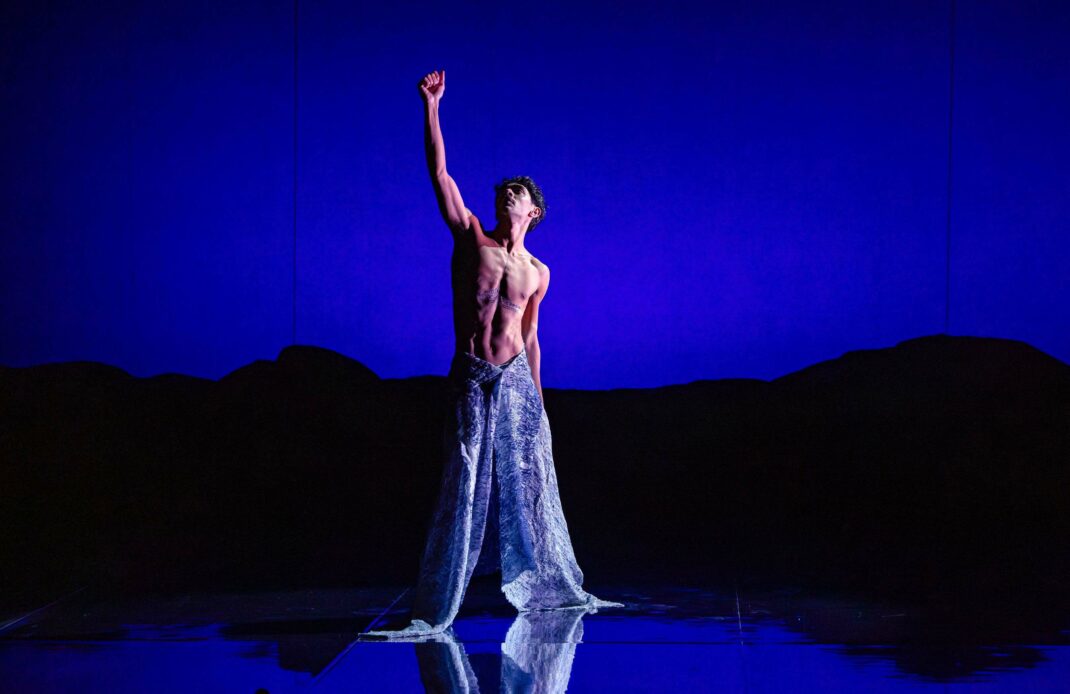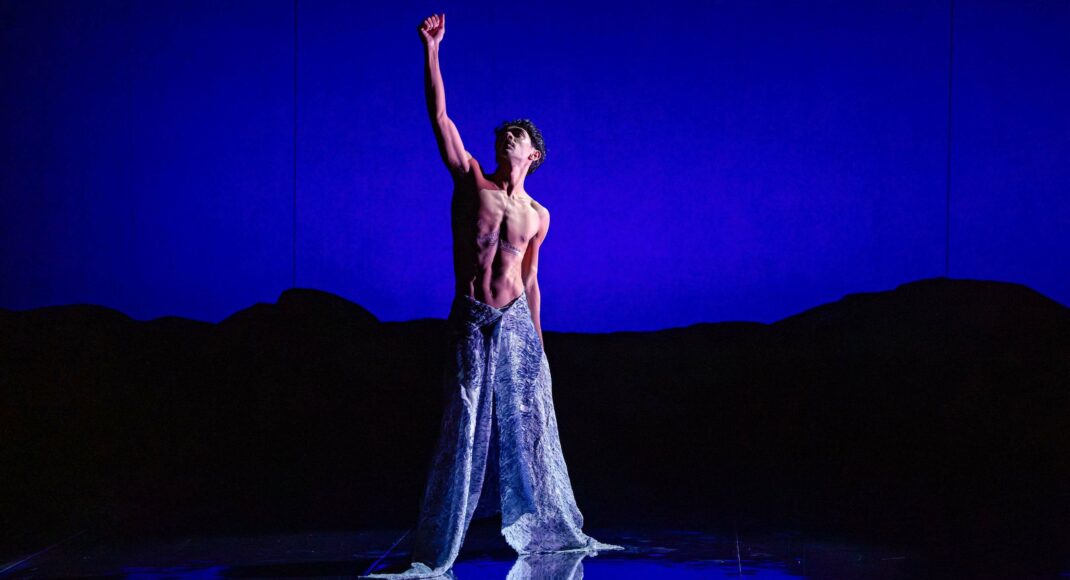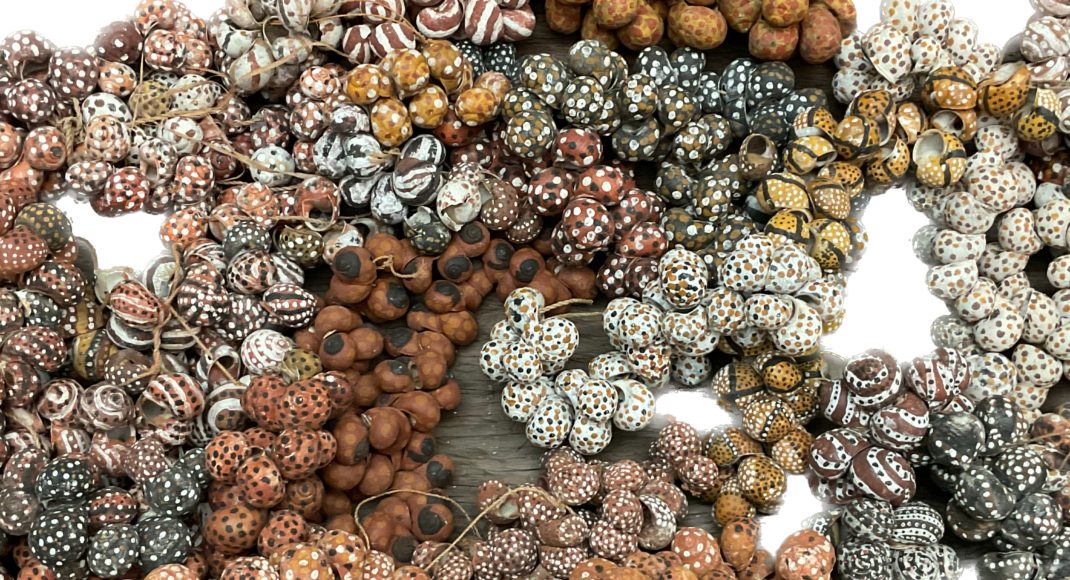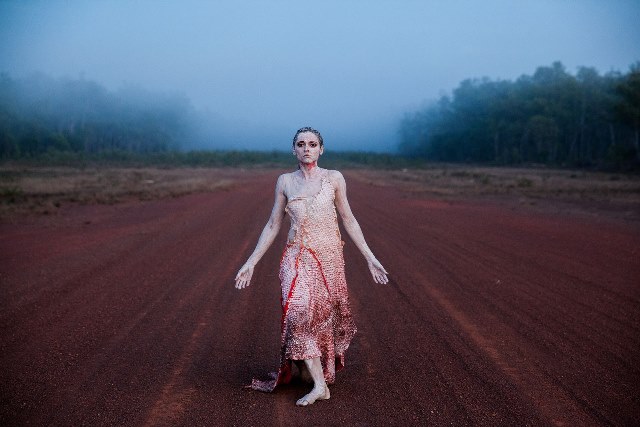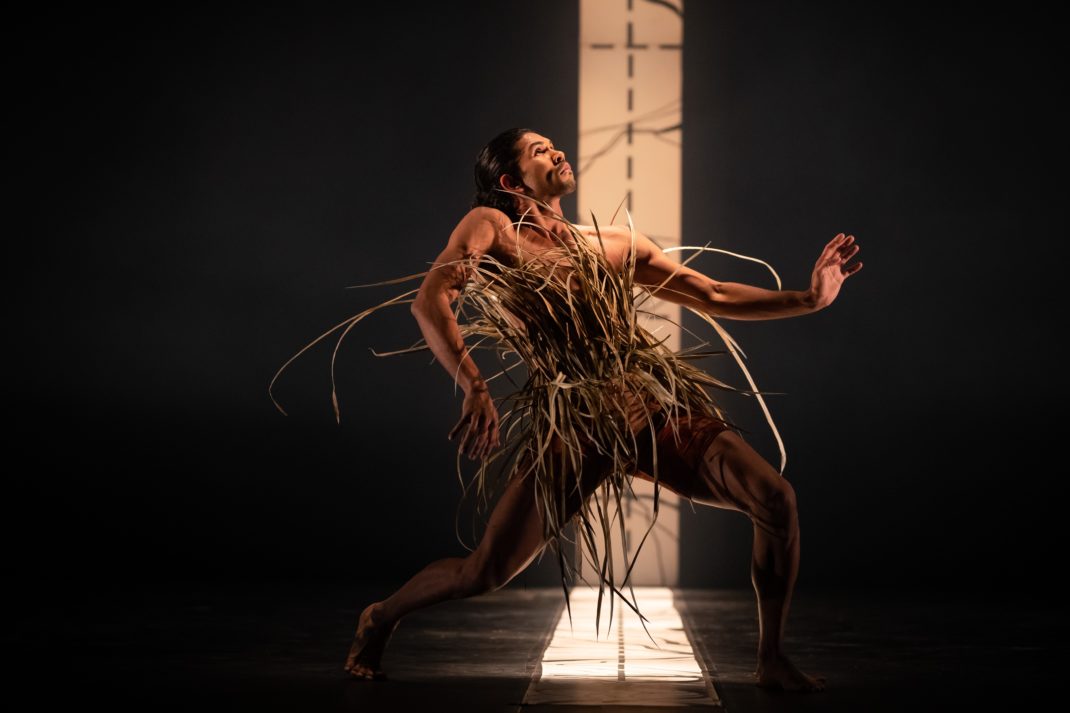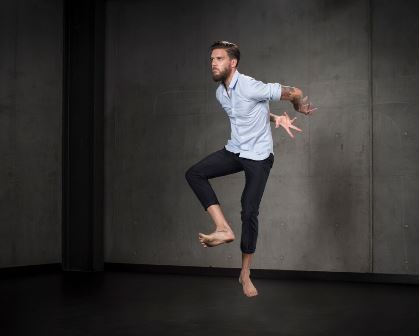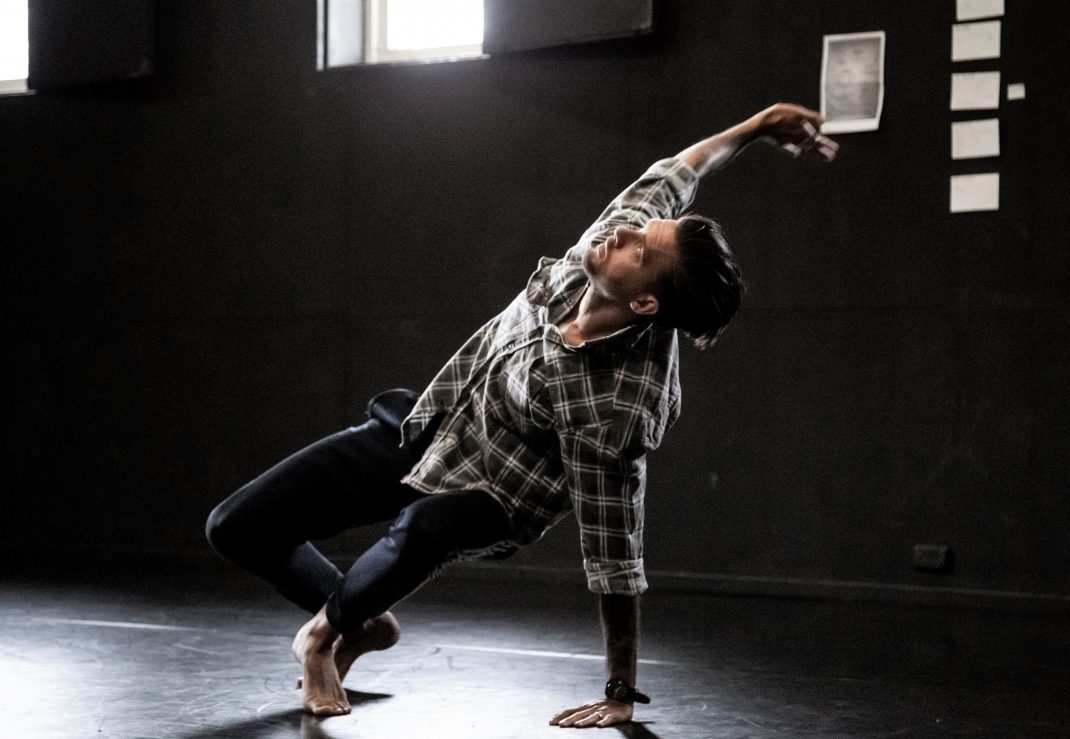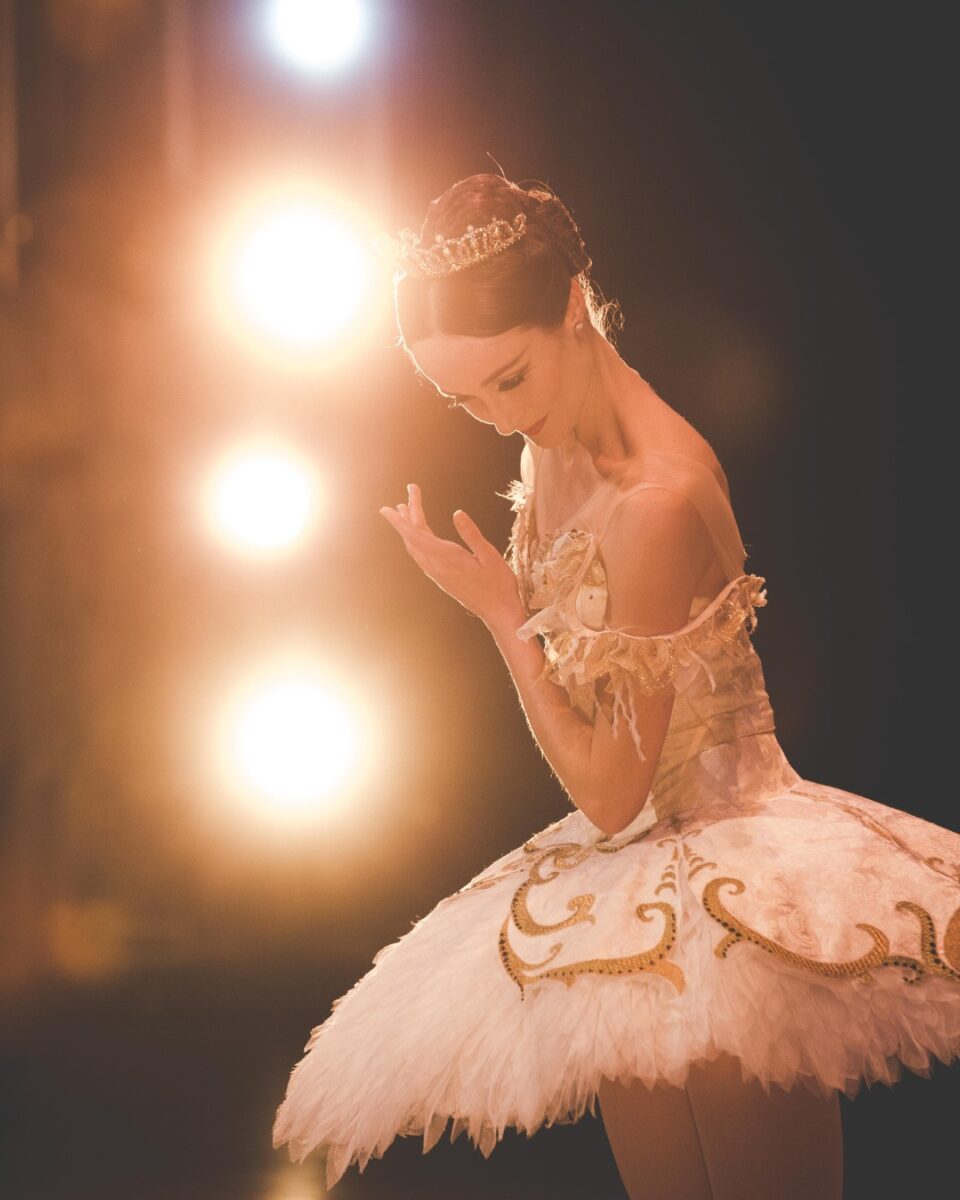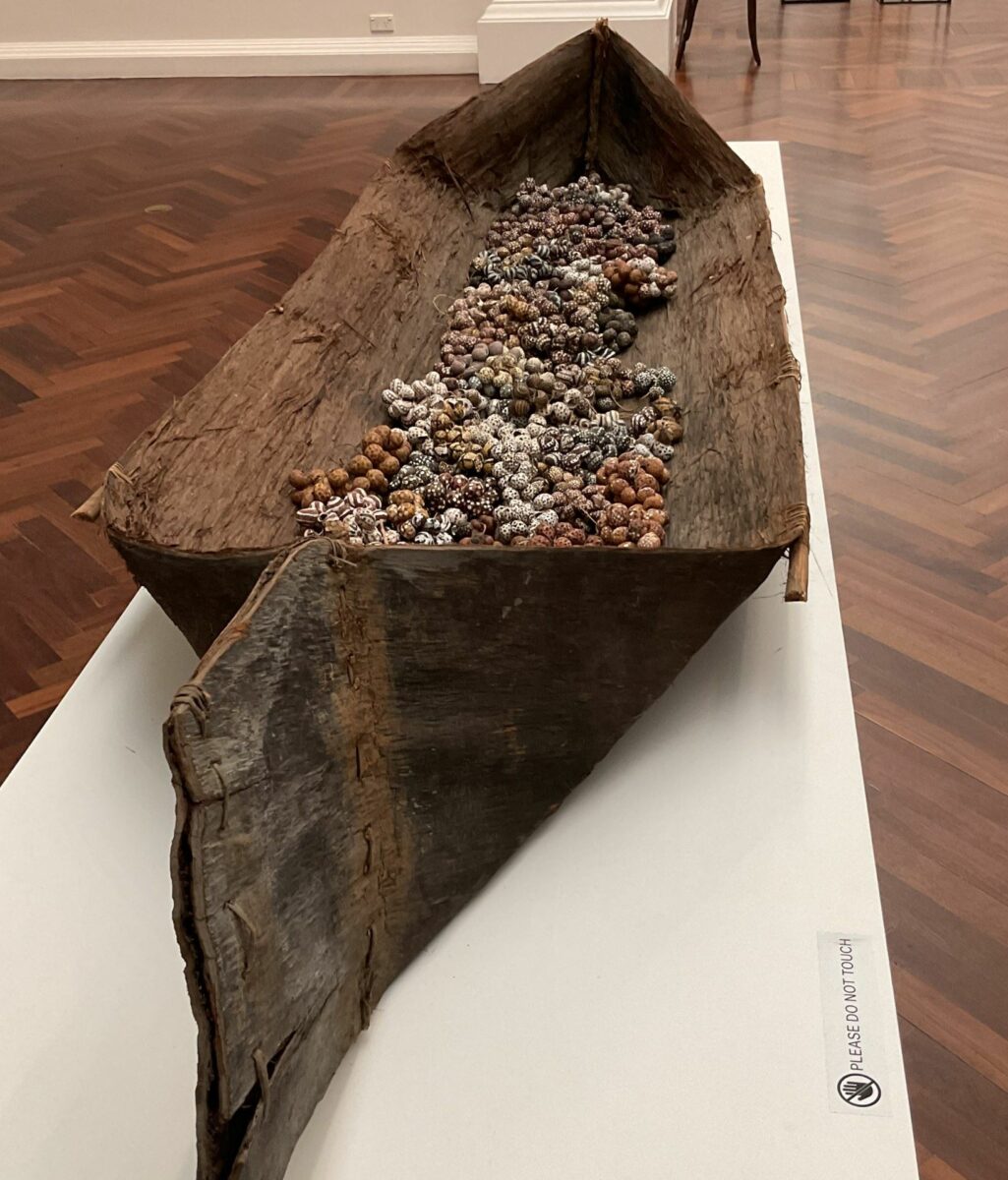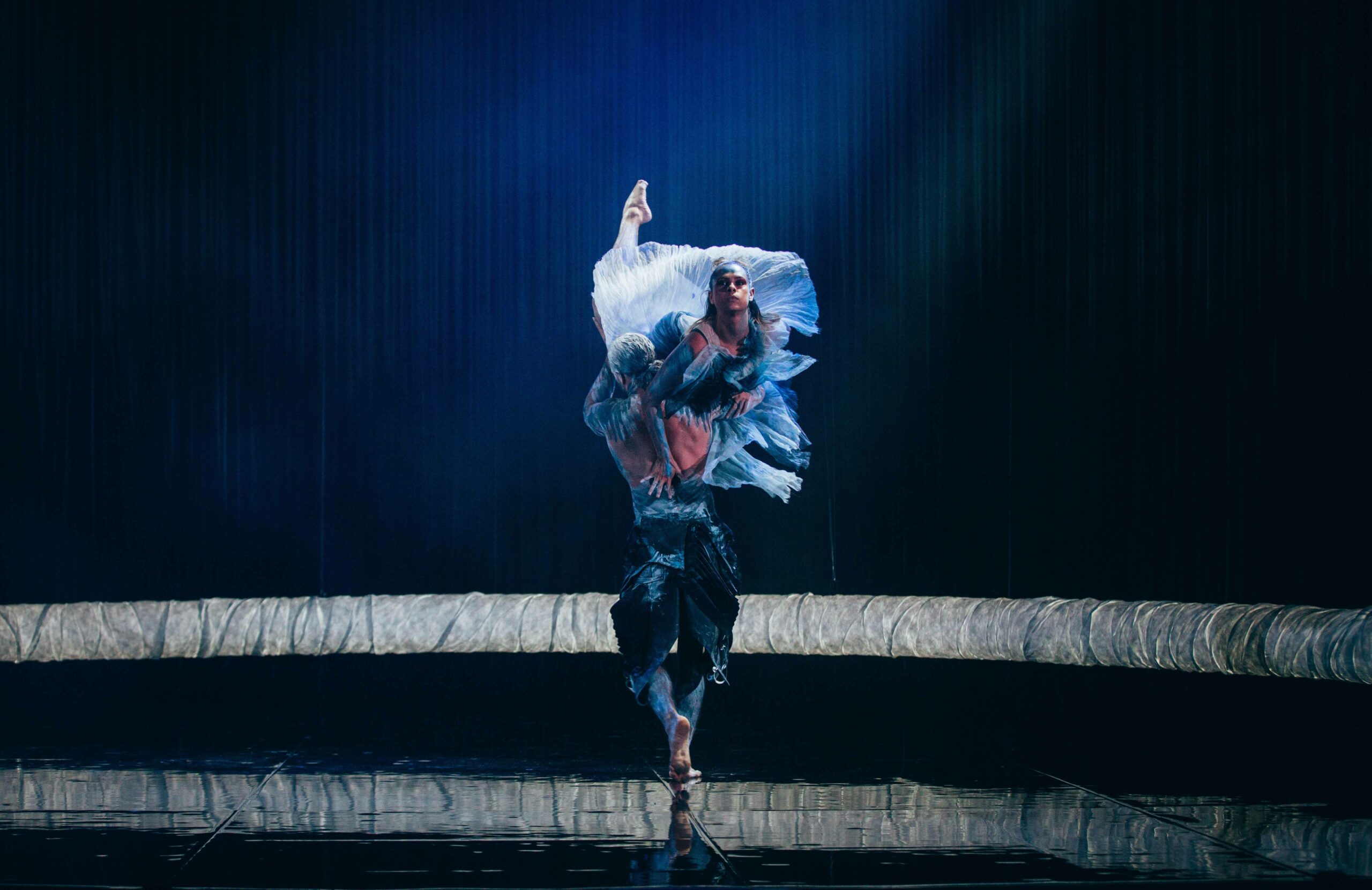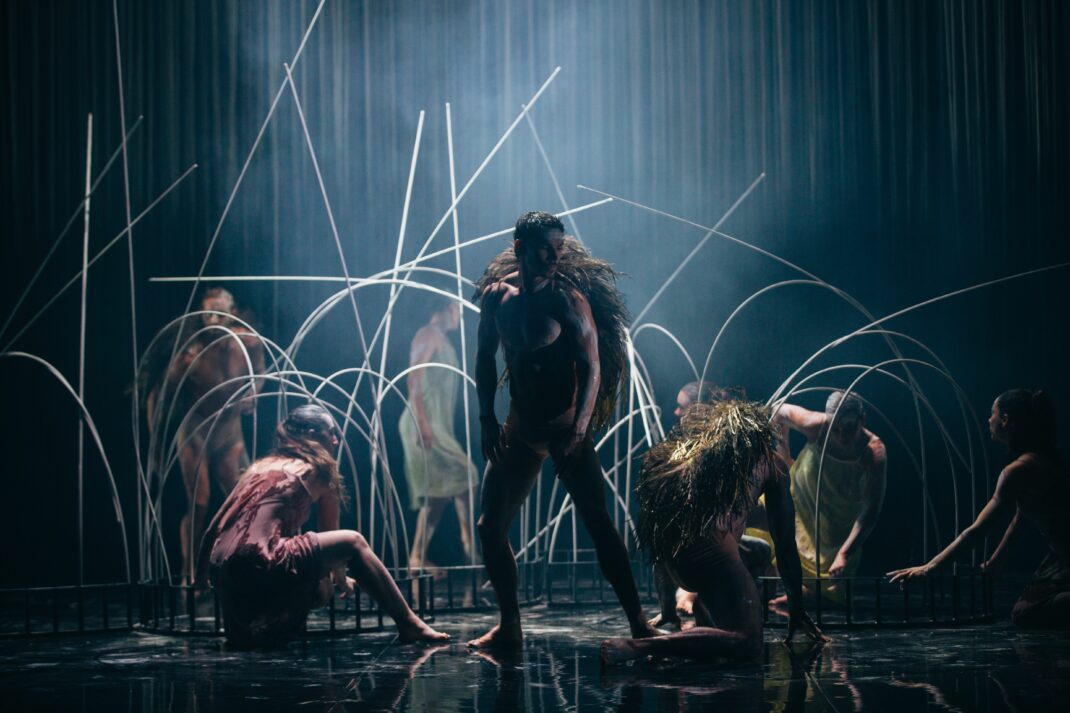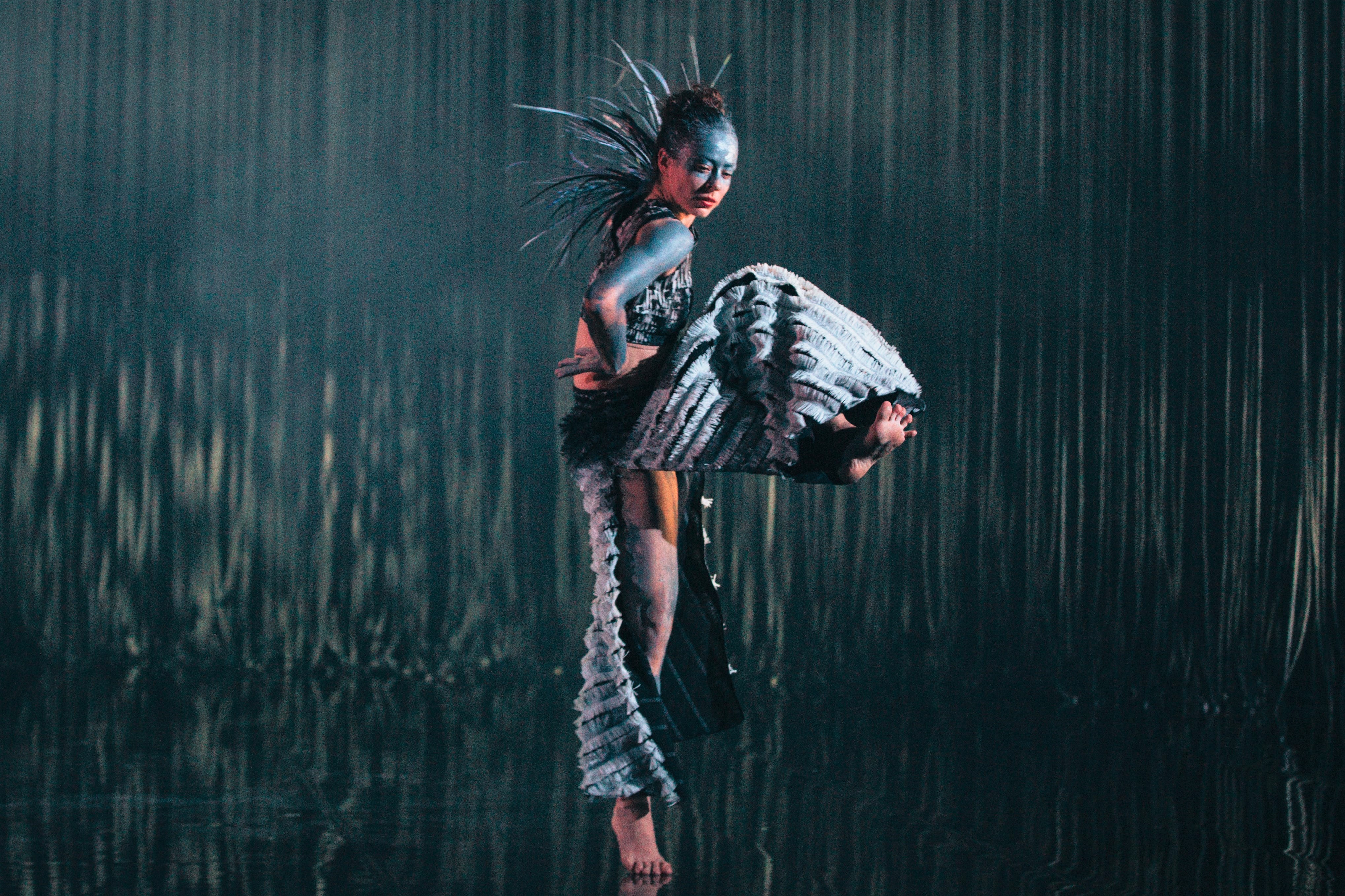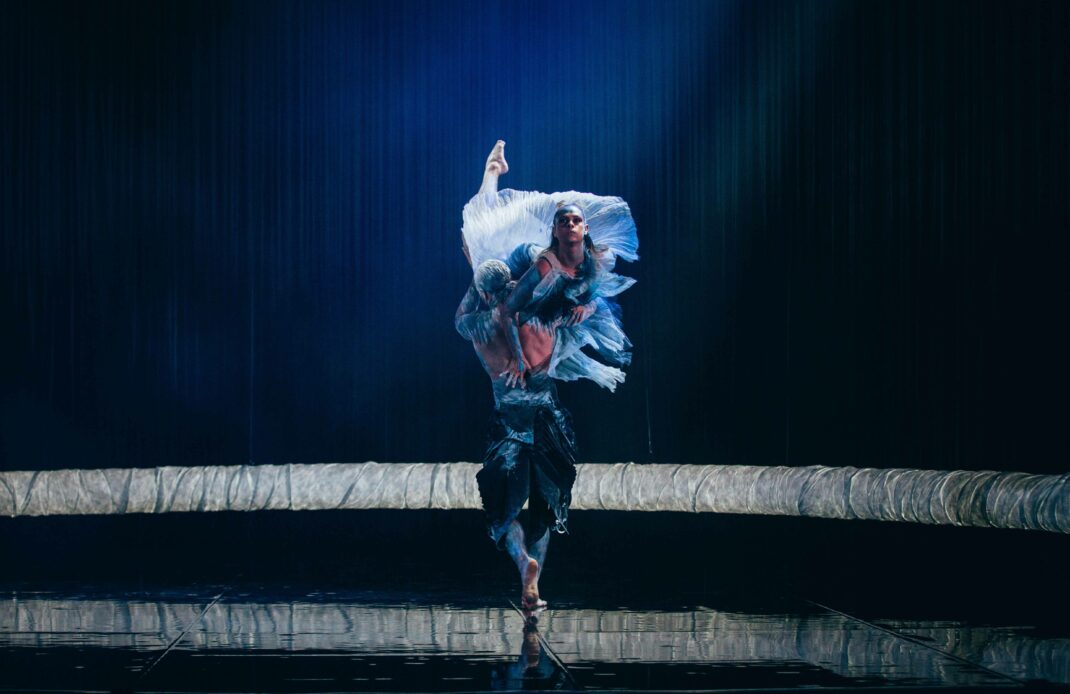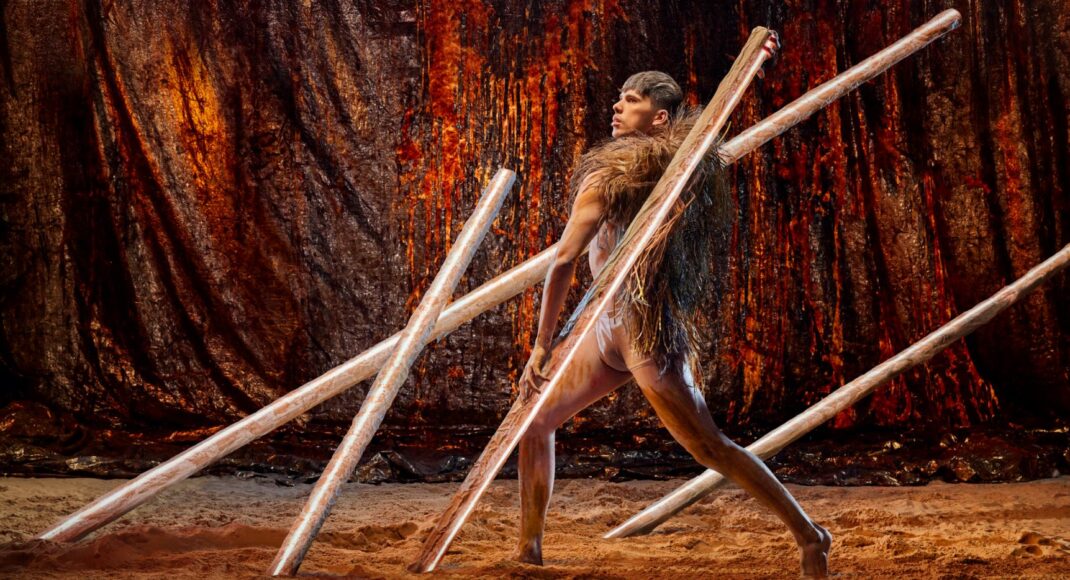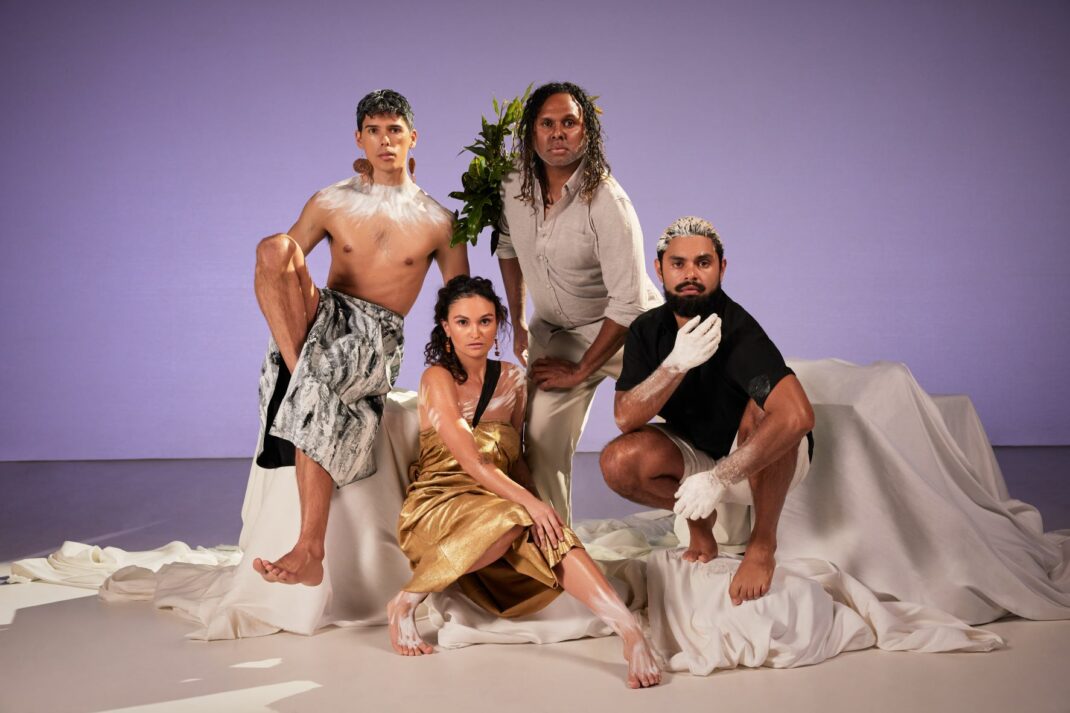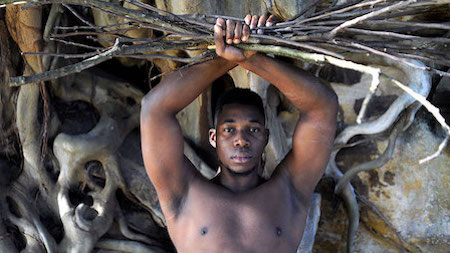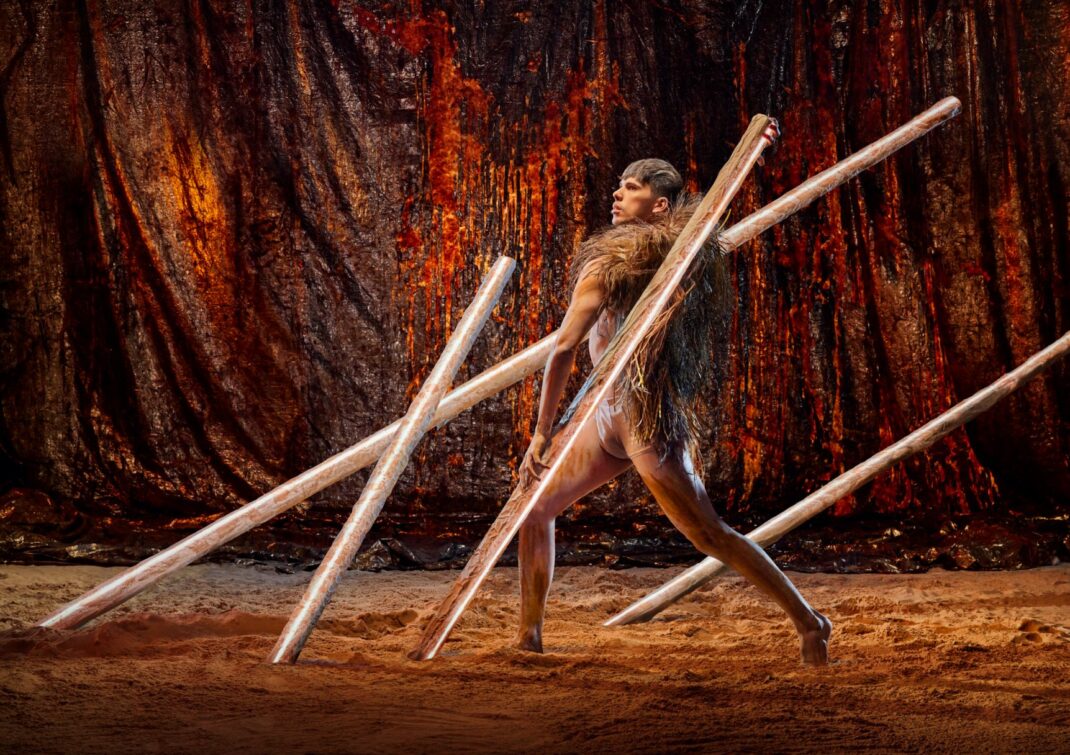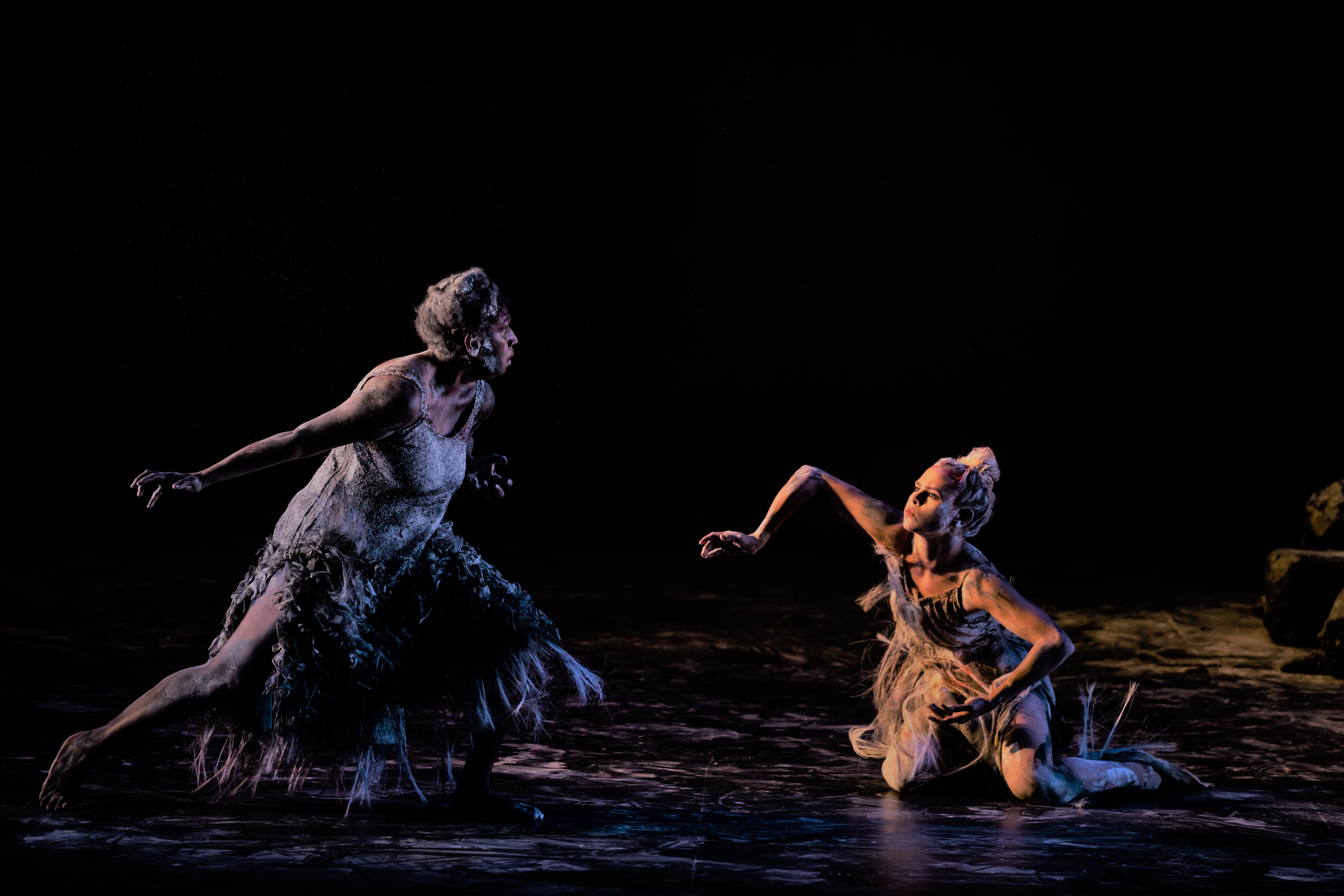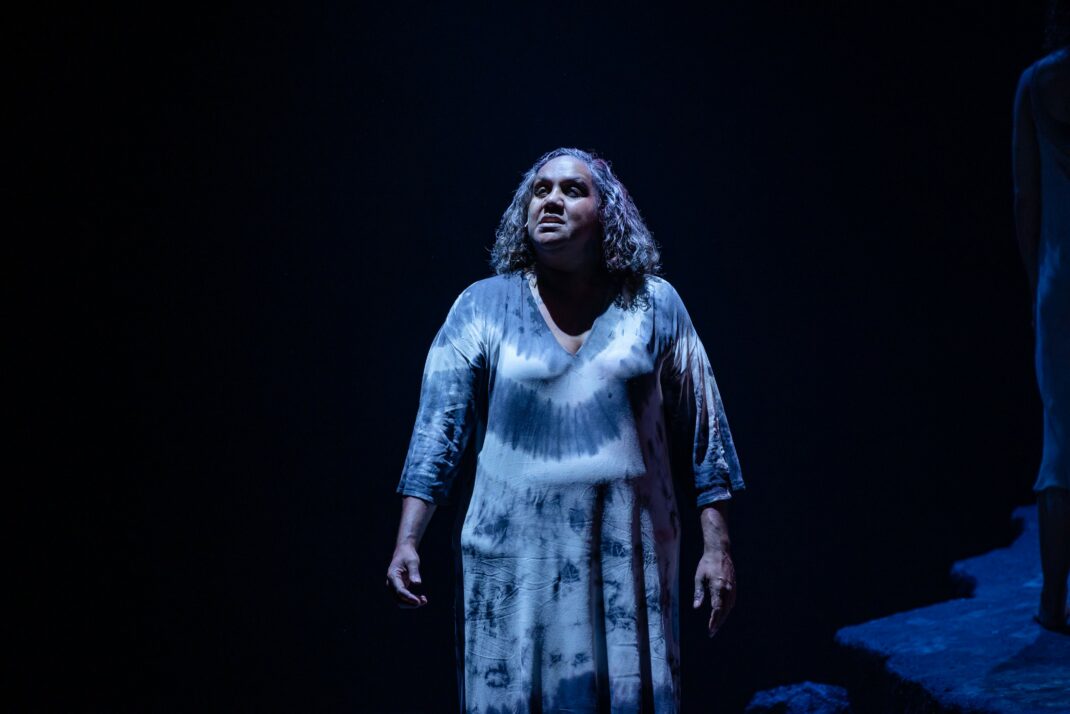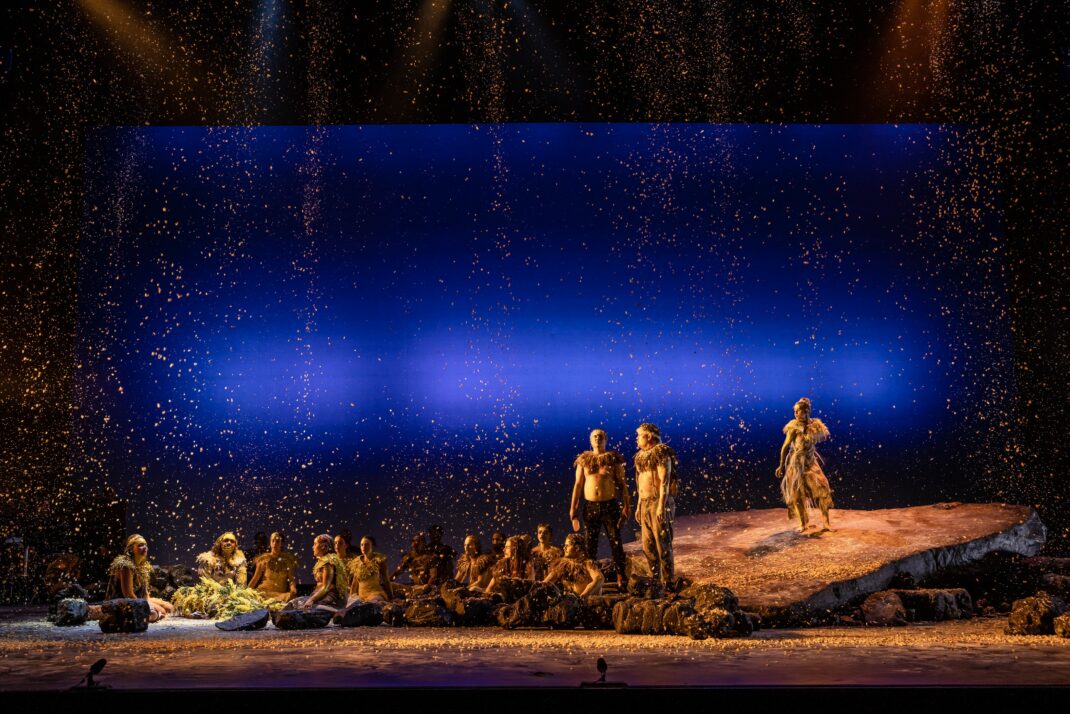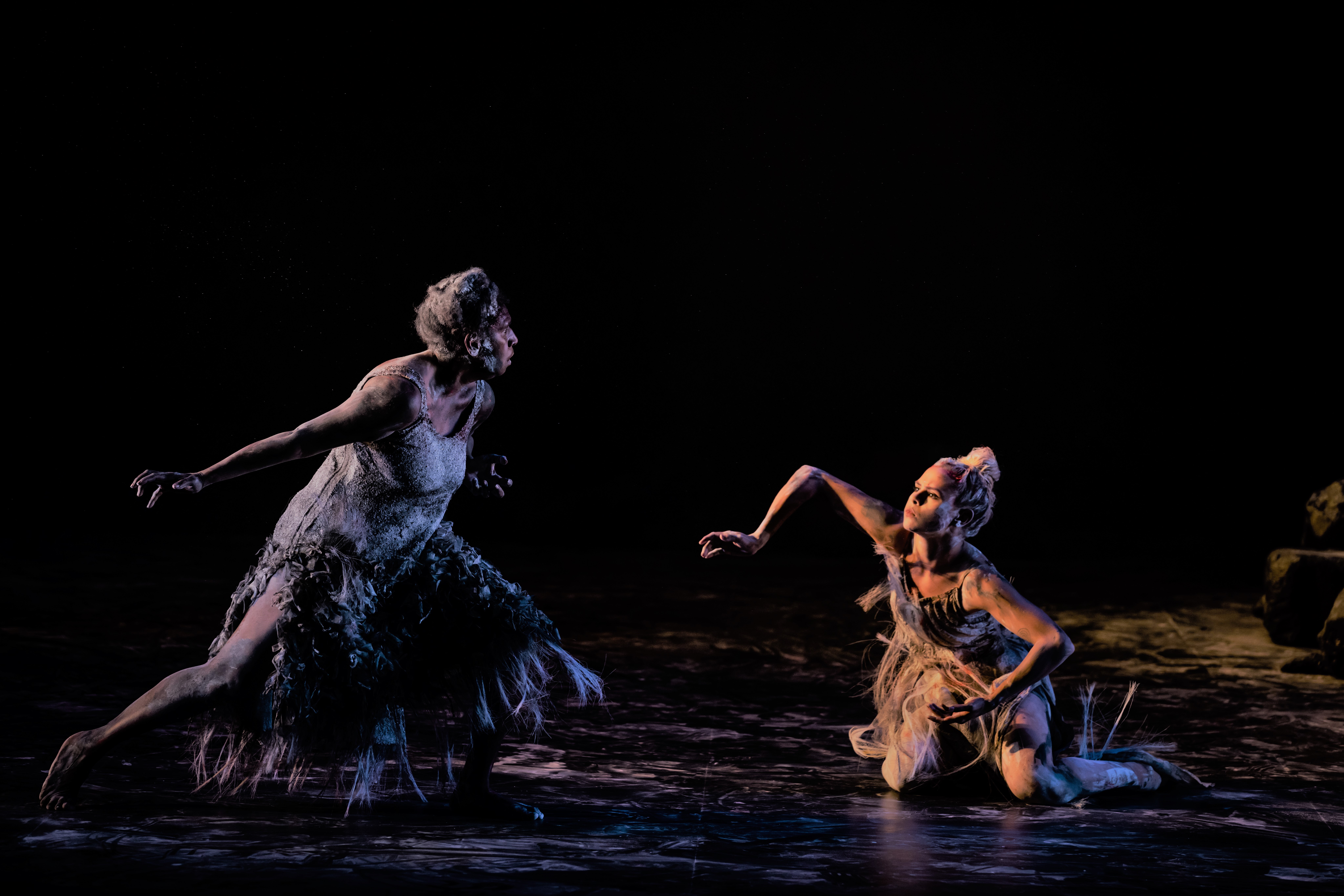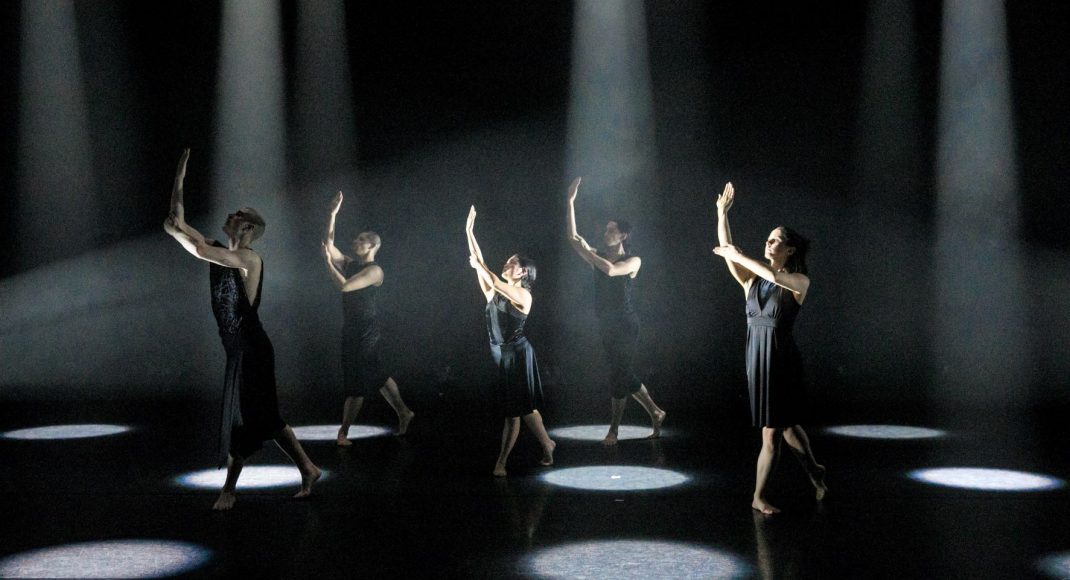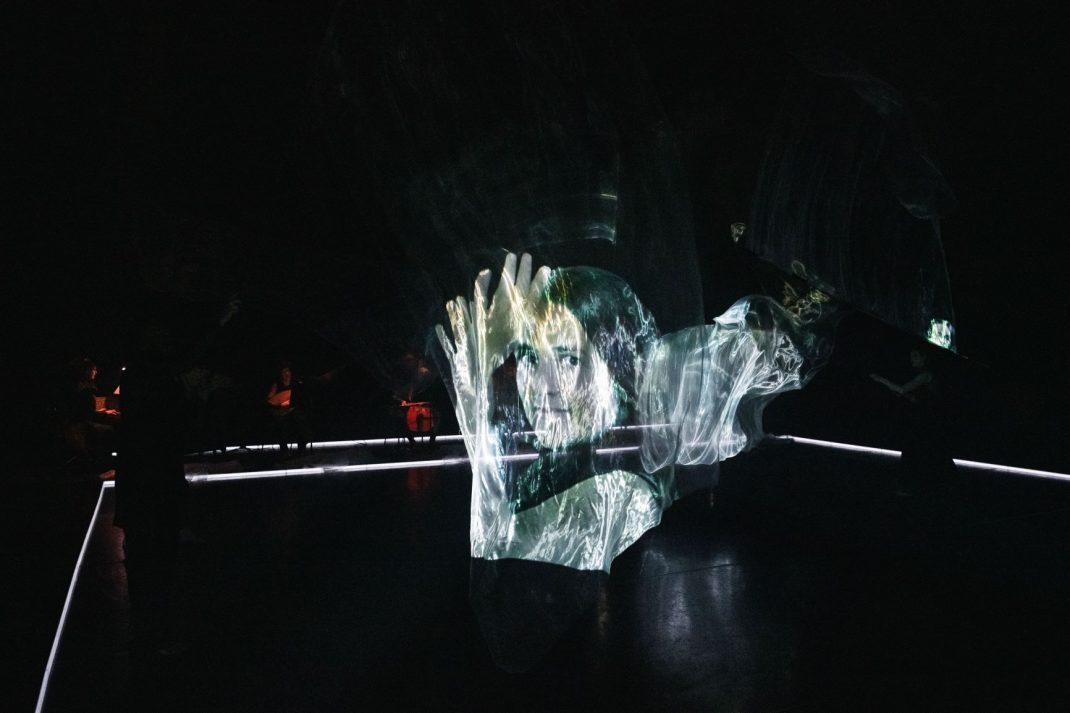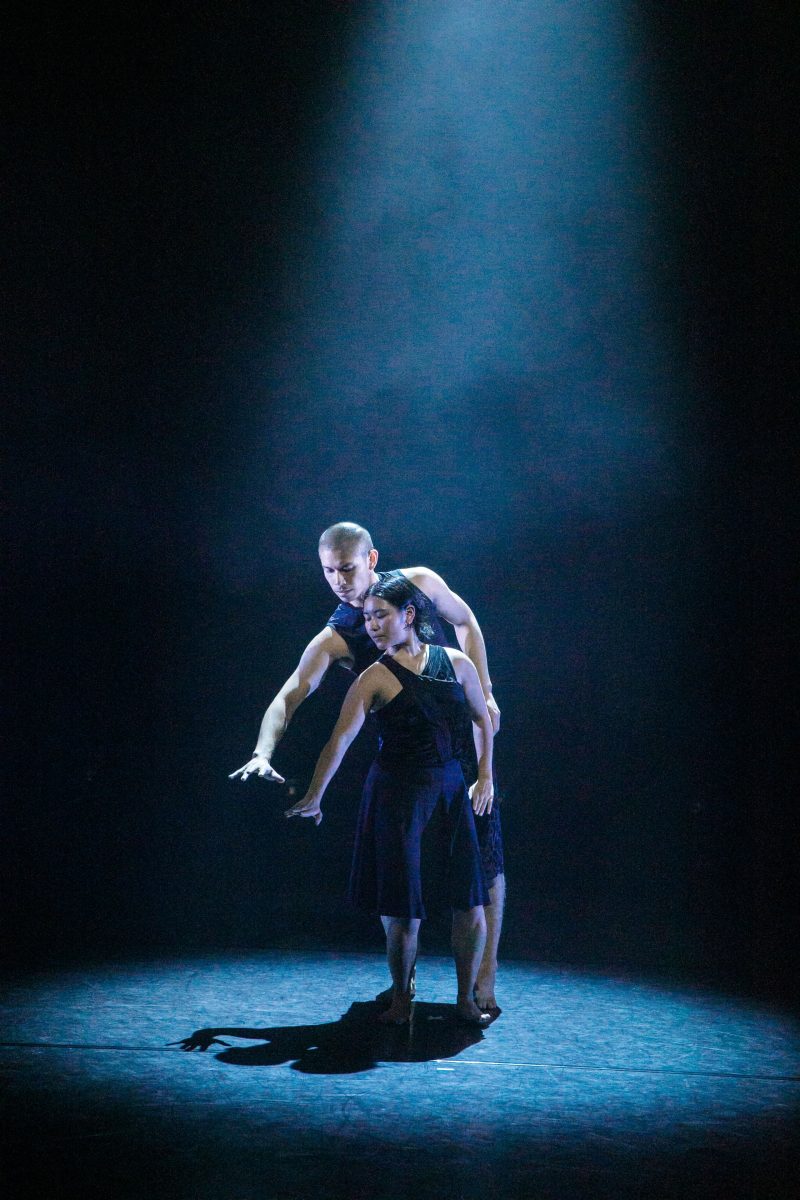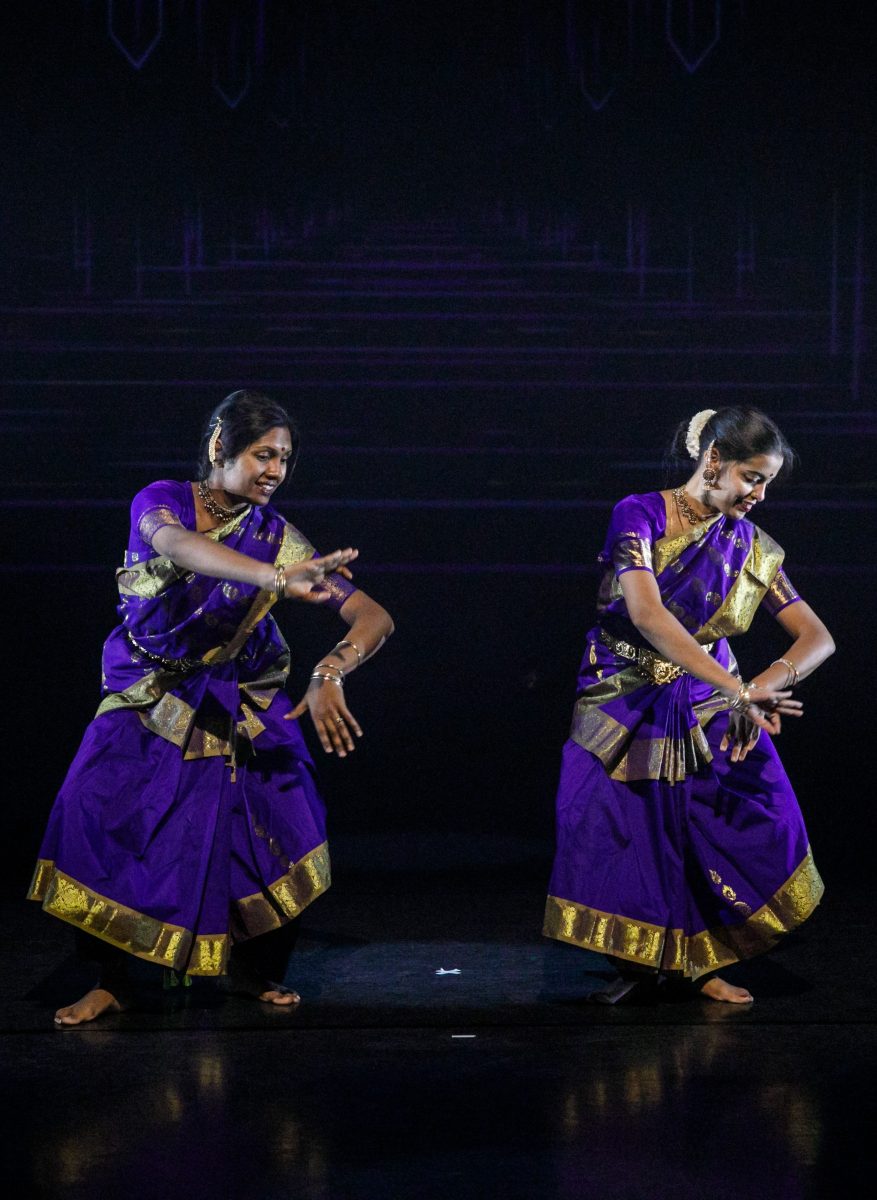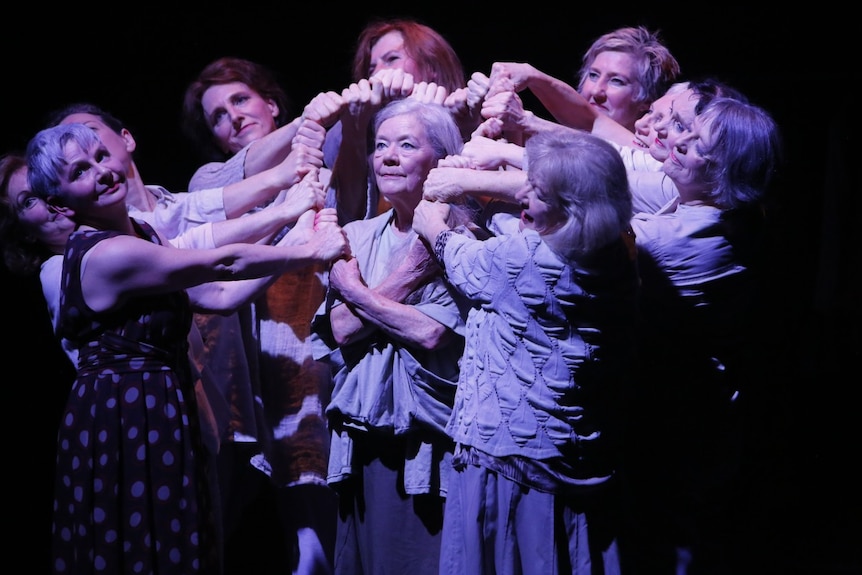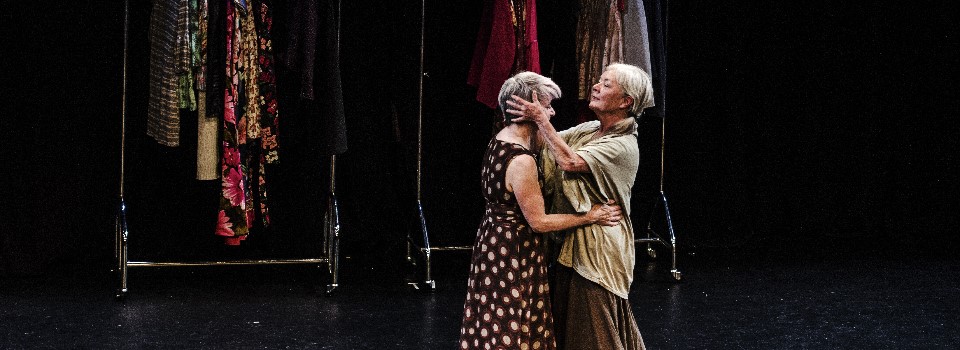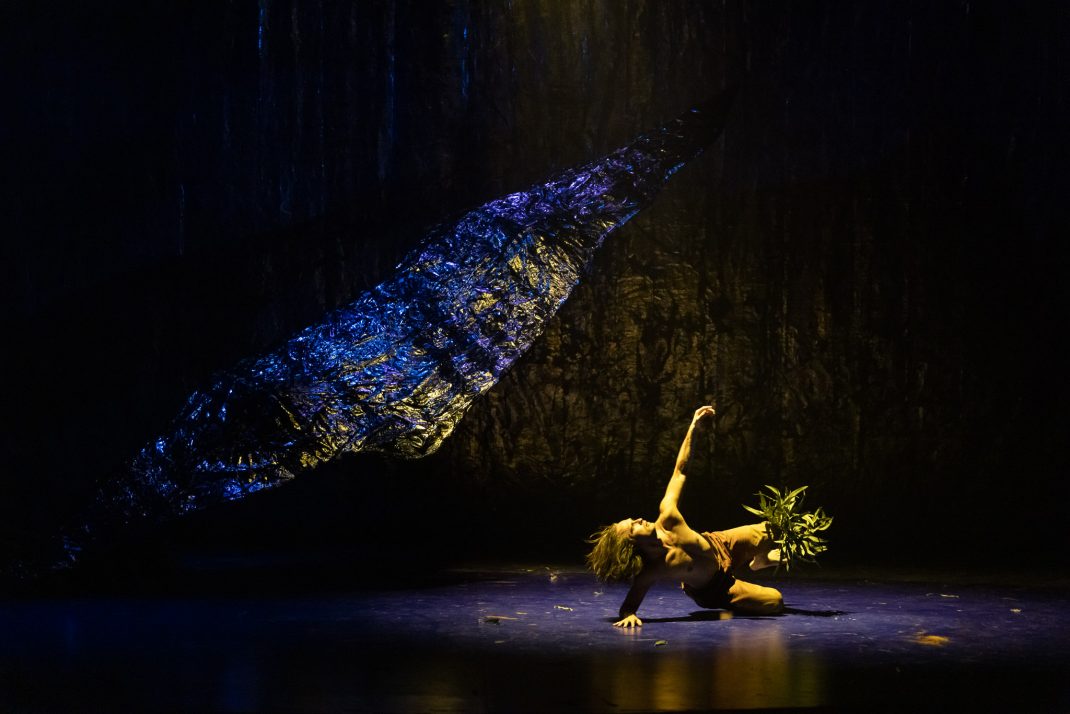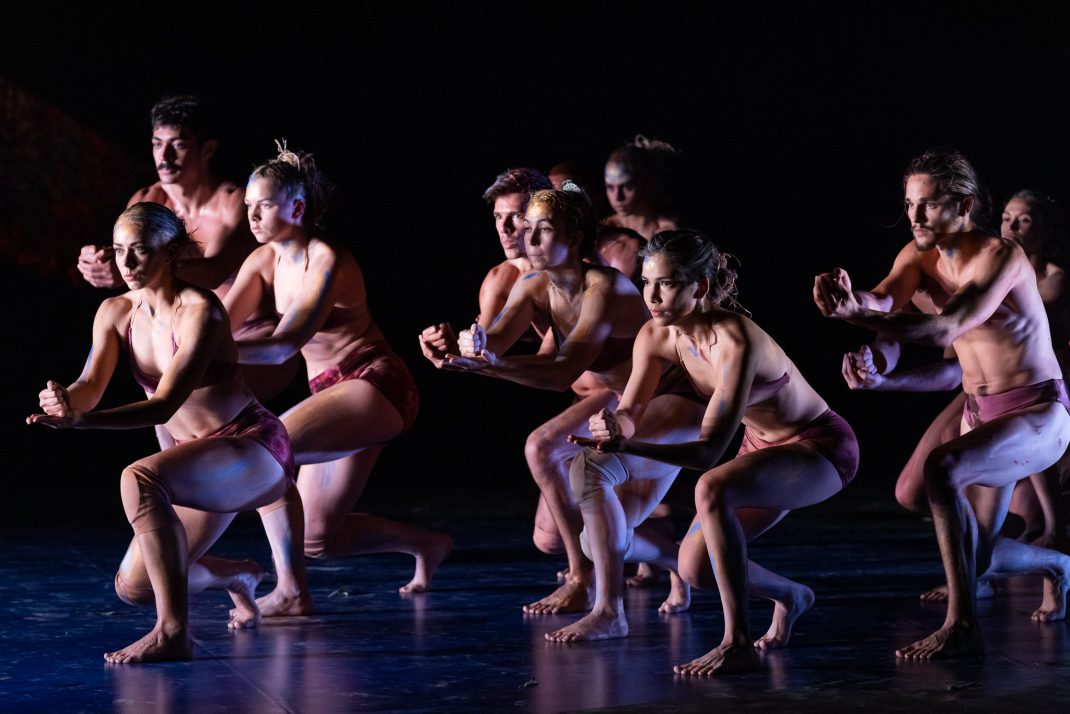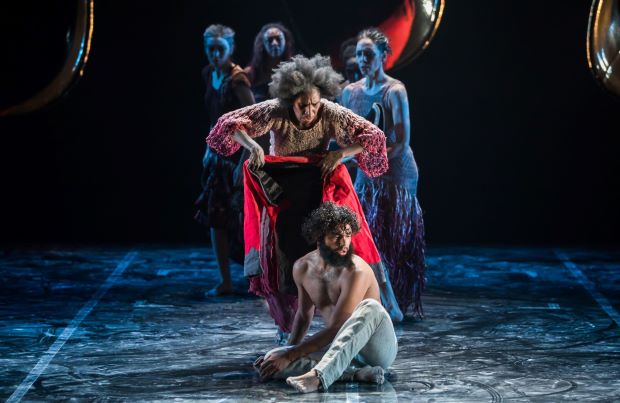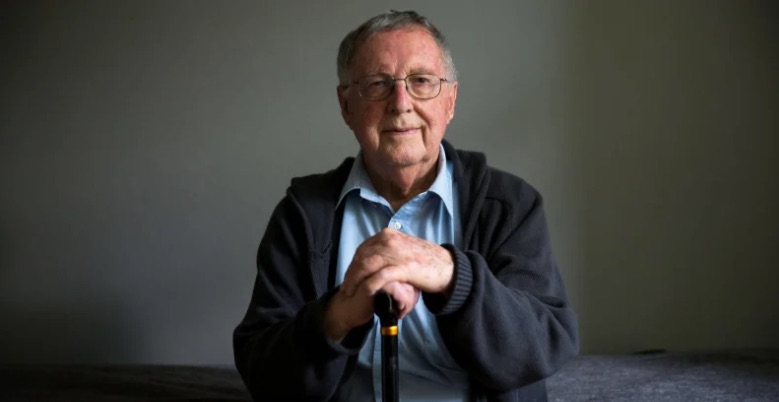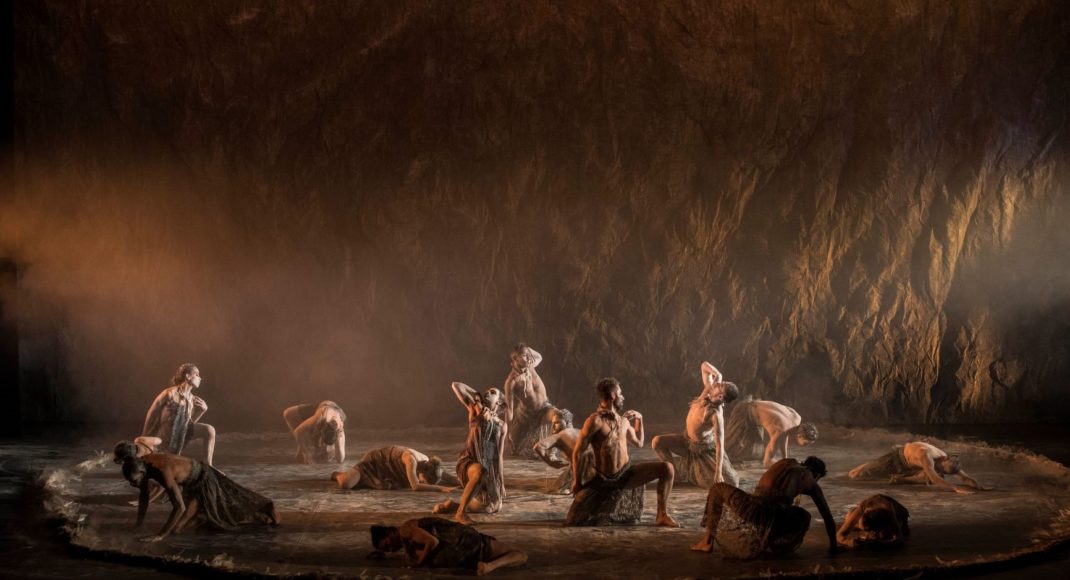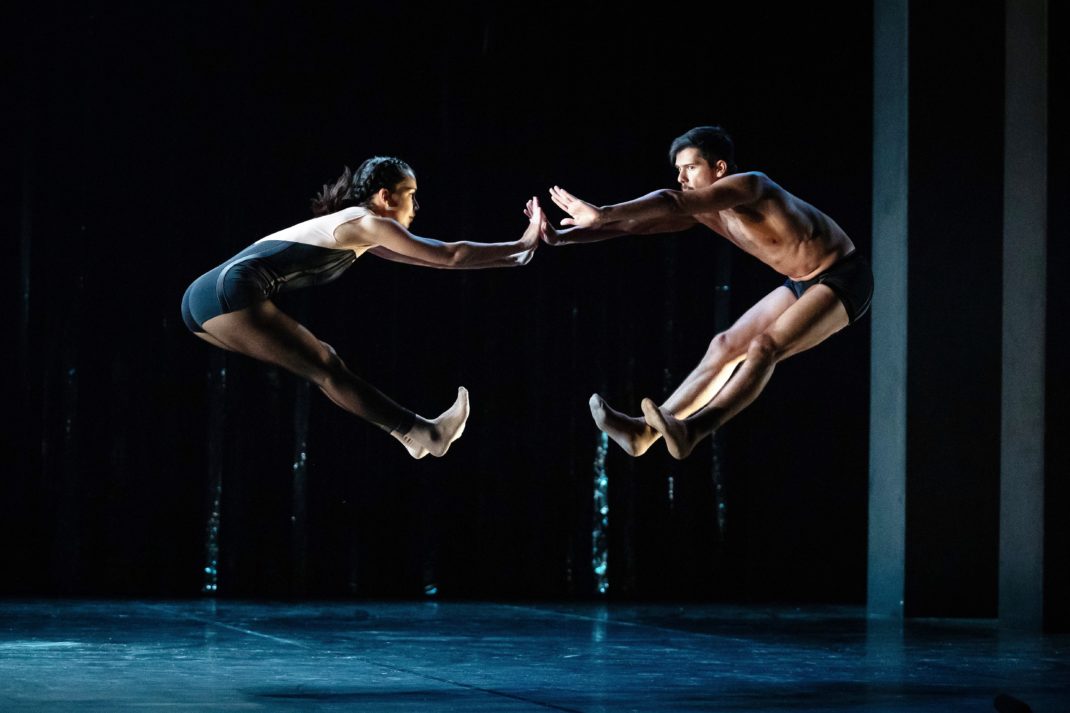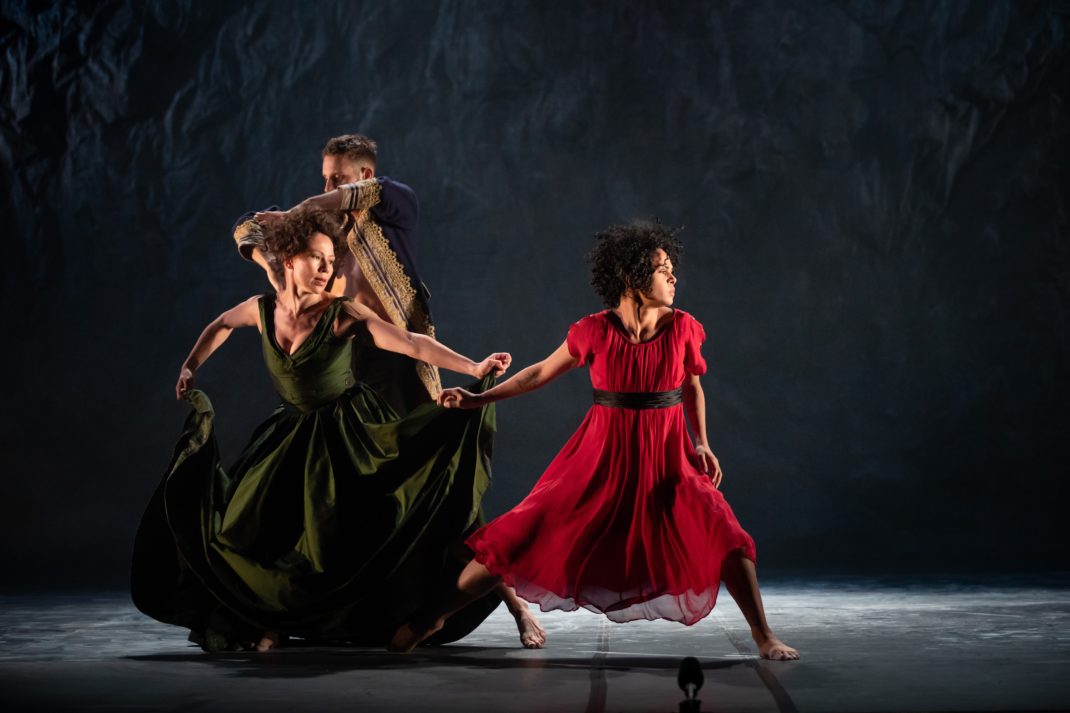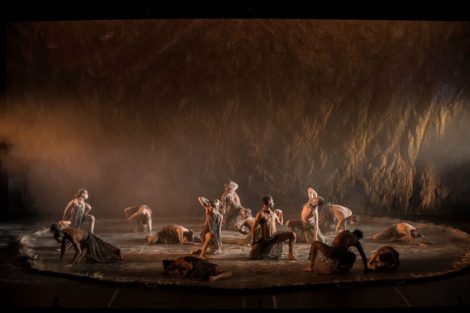13 June 2024. Drama Theatre, Sydney Opera House
Below is my slightly enlarged review of Horizon, originally published online by Dance Australia on 17 June 2024. A link to the Dance Australia version is at this link.
Horizon is a collaborative venture focusing on selected dance customs and activities in Australia and Aotearoa New Zealand. It is Bangarra Dance Theatre’s first mainstage, international collaborative initiative, a momentous and admirable undertaking. But the production was not without some issues.
Horizon was officially described as a double bill but there were three works on the program. Two were linked by the overarching title, The Light Inside, with one by former Bangarra senior artist Deborah Brown, the other by Māori choreographer and director of Auckland’s New Zealand Dance Company, Moss Patterson. Despite the linking by title, each displayed a quite different approach, especially in a choreographic sense. I’m not really sure why the two weren’t thought of as separate works. The coupling seemed to me to be just a convenient and non-dance way of making an association between two works on the program.
Horizon opened with a short work, Kulka, by Sani Townson, former Bangarra dancer and now Youth Programs Coordinator with the company. His focus was on nighttime and the fact that his specific Torres Strait Island society abounds in traditional songs and dances about constellations. Those songs and dances are guides to the totems and clans that make up the culture of the society.
Nine dancers performed Kulka to a percussive score by Amy Flannery. A strong, dominant role was taken by dancer Kassidy Waters. The choreography for Kulka was, however, a little repetitive especially in the beginning when Waters was constantly held upside down and carried across the stage in this position. But Townson later developed some interesting groupings of dancers and introduced us to a feature of Horizon that was repeated throughout each of the works: the dancers were mirrored in a structure that acted as a kind of backcloth in the case of Kulka, or later in the show as reflections in a watery foreground.

Deborah Brown’s contribution to The Light Inside was subtitled Salt Water. Opening with a magnificent solo from Daniel Mateo, Salt Water was performed to a score by Steve Francis and Brendon Boney. Brown’s choreography was beautifully fluid, mesmerising even, with all the dancers contributing to what was an outstanding performance. A particular highlight was a solo by Lillian Banks called Blue Star. This section told of a seasonal change when moisture in the air makes the stars twinkle and turn blue. This change becomes a guide for the daily work of the seafaring peoples of the Torres Strait Islands. Banks gave a clarity to every moment of the choreography.
Moss Patterson’s contribution, also performed to the score by Francis and Boney, had the subtitle Fresh Water reflecting Patterson’s background growing up in the area around Lake Taupo on the North Island of Aotearoa New Zealand.
His choreography had overtones of the Māori haka and I couldn’t stop my mind moving out of the theatre to football matches between Australia and New Zealand, which inevitably contain a haka at the start of the match. But the work ended in a quieter fashion with the full ensemble dancing to suggest peace, with final moments proposing the meeting of salt and fresh water.
As is always the case with Bangarra productions, there were elements beyond the choreography that were standouts. In particular the costume designs by Clair Parker for Kulka and Jennifer Irwin for The Light Inside, were exceptional. At one stage Irwin’s costumes for Salt Water featured extended sleeves and similar additions to other parts of the costumes. These additions were manipulated by the dancers so that choreography and costume moved as extensions of each other.

Emily Flannery, Maddison Paluch and Courtney Redford in a scene from Salt Water in The Light Inside. Bangarra Dance Theatre, 2024. Photo: © Daniel Boud
It is unfortunate, however, that the lighting design by Karen Norris was quite dark for much of the time, and the beautifully decorative elements of the costumes were only really clear via production images. Elizabeth Gadsby’s set design made quite clear the concept of the horizon around which the works were developed.
The evening was quite different from what we have been used to watching from Bangarra. ‘Quite different’ because the usual narrative-style approach we so often associate with works from Bangarra was missing, or at least the works were based on much more abstract ideas than has usually been the case. Hope and light across and within cultures, with water also a feature, were the themes I extracted from the production.
Michelle Potter, 17 June 2024
Featured Image: Daniel Mateo in Salt Water from The Light Inside. Bangarra Dance Theatre, 2024. Photo: © Daniel Boud
